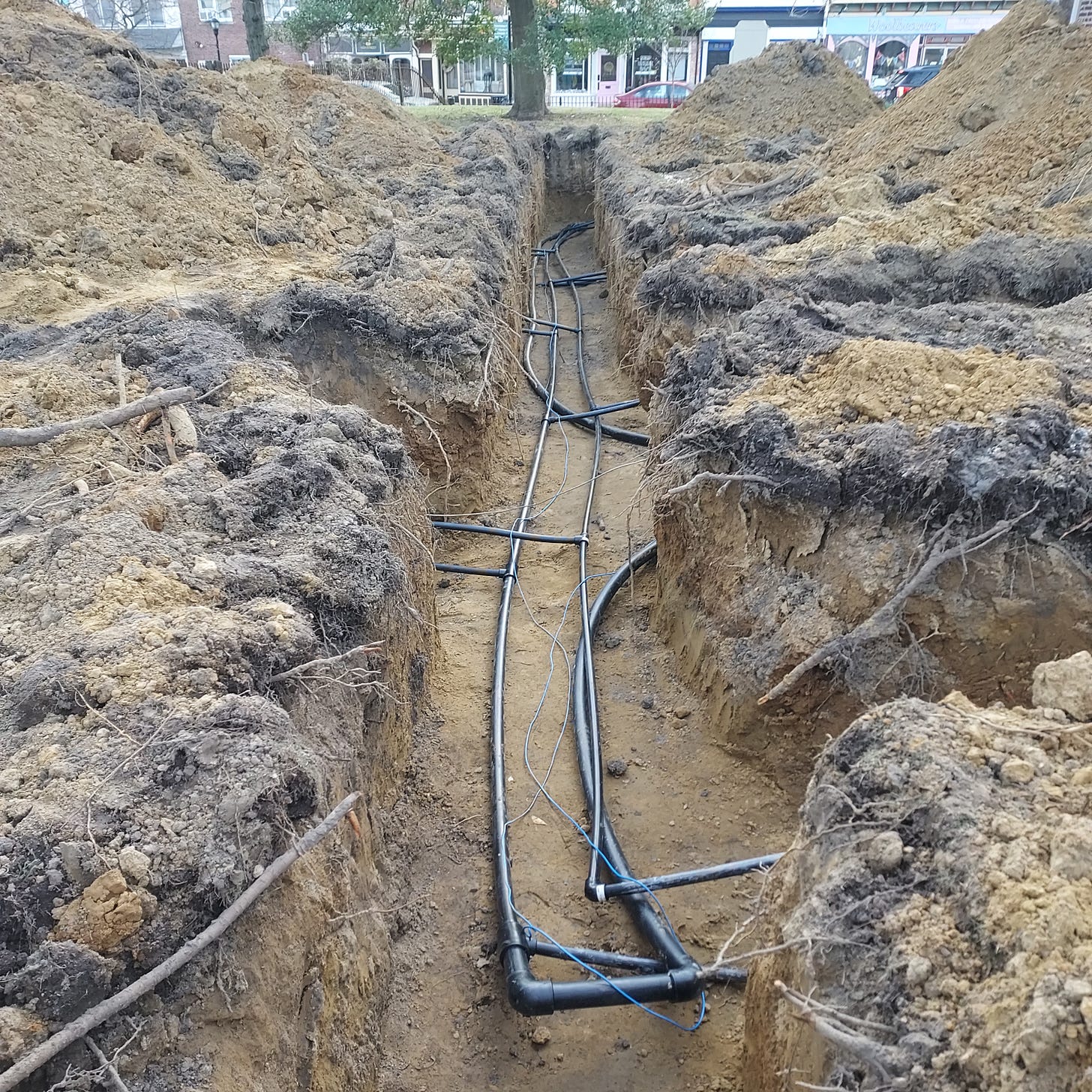QUAKERS AND THE GEOTHERMAL LOOP
A Member of The Friends Meeting in Mt Holly Talks History, Quaker Values and Heating Systems.
By Nick Sodano, Editor
If you tour the Quaker Meeting House at Garden and High Streets with William Robbins, be sure to ask him whether British troops butchered livestock in the building. “Total Nonsense,” says Robbins, who also dismisses the other colorful livestock story about “rope grooves” on a wooden column. “Any self-respecting wood turner will tell you exactly what those marks are… they are purely artifacts of the turning process”. He says it may have been that British troops hacked a groove out of the back of a pew for some reason lost to time, but the livestock stories are Apocrypha.
With the historical record now corrected, we considered some less controversial facts about the Meeting House. It has a marble stone built into the front of its brick wall that proclaims two dates for the building: 1775 and 1850. And if you study the walls you will notice a clear demarcation where both the brick color and bond patterns change, signaling the date change from the first to second floor. And speaking of floors, the building has what Robbins calls “Southern Yellow Pine” which looks identical to the flooring used in my own 1830 home on Garden Street and boards that I salvaged from a renovation job on Buttonwood Street. Closing out our discussion about Quaker history, I learned that an original Meetinghouse was located toward the rear of the property now occupied by the new cannabis dispensary called Voltair on Mill Street.
WHY A GEOTHERMAL LOOP?
Mr. Robbins explained that a uniquely Quaker decision process was employed to make the decision about heating and cooling. Settling on Geothermal involved seeking a “Sense of the Meeting through a process of communal discernment. They do not vote.” If this is of interest to you, see https://quaker.org/decision-making/. Robbins put it this way “Quaker decision making can be slow, because there has to be consensus.”
To get more specific about the considerations, it is true that the system cost was considerable, but the Quakers balanced financial considerations with factors that are not easily measured in dollars. Relative to solar options, Robbins said that “this is a historic district, and we are limited by what we can do to the exterior of the building”. “That’s another advantage of Geothermal. You won’t see anything outside the building, it is all inside”. The blowers and air handlers are hidden in closets that reused old lumber. “We are trying to make it look like it has always been here. That’s the whole objective with everything we do”. They did find grant funding to offset a significant portion of the price and reasoned that geothermal also has lower long-term maintenance costs.” Plus it offers the possibility of a smaller carbon footprint for air conditioning and finally having a comfortable temperature in summer is a great improvement to the serviceability of the building. The biggest cost will be electricity but “we get our electricity from a green energy supplier that is all non-combustion generated”.
As for the system specs, Robbins said that it employs seven 340 foot deep holes that accommodate a “closed system” pipe network which circulates a type of antifreeze solution. The liquid enters the holes where heat is exchanged through the pipes with the surrounding soil. “It's either cooled by the ground, or heated by the ground which is a constant temperature of 55 degrees. It's never trying to draw heat from air when its 15 degrees outside [like standard heat pumps], because the ground is always 55”.
“We will keep the natural gas system in place because its possible that in the very coldest days of the winter, we may not get enough heat from geothermal to achieve temperatures that people are accustomed to.”





